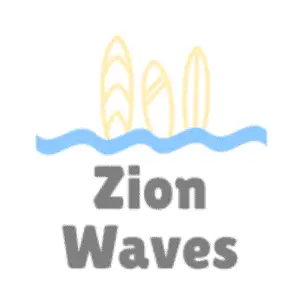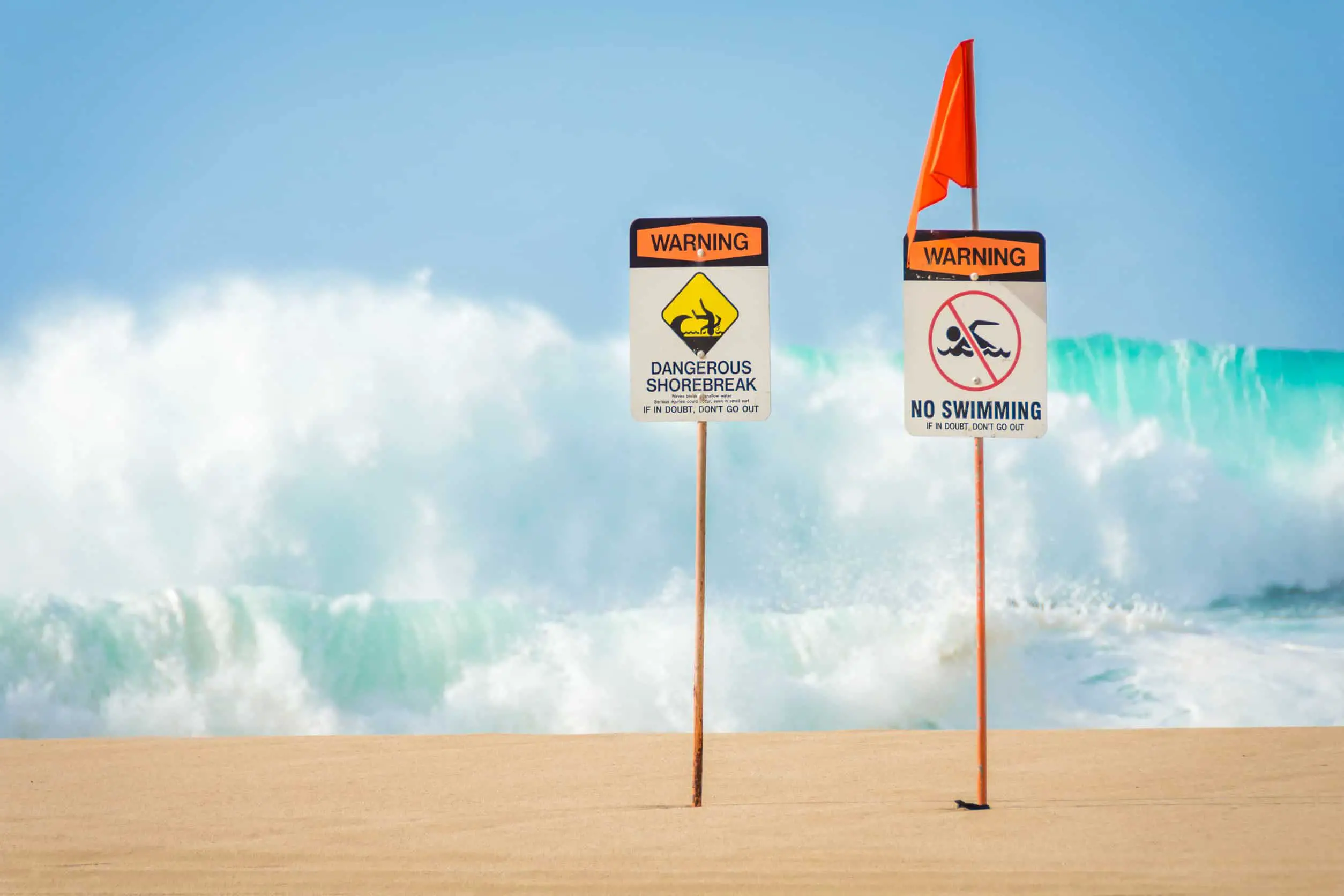Surfing is often an enjoyable sport that can bring athletes a little closer to nature. But it can also be a hazardous activity, often due to strong currents and huge swells. Some waves are notorious, having claimed the lives of several talented and experienced surfers.
The most dangerous wave to surf lies off the coast of Shipstern Bluff, Australia. The waves here can reach 30ft (9m) in height, but the greatest dangers may be the coral reefs, rocky shorelines, sharks, and cold waters. Even more worrisome, the nearest hospital is about 72 miles (116km) away.
Still, the question remains: What is the most dangerous wave to surf? To find out, we’ll examine the qualities that make a wave treacherous. We’ll also compare the most feared surf spots worldwide to discover which might be the deadliest!
What Qualities Make a Wave Dangerous To Surf?
Many waves can knock surfers off their boards and swallow up slow swimmers. But the most infamous and dangerous waves tend to share a specific set of qualities.
For example, the deadliest swells often exhibit:
- Tall Wave Height
- Strong Rip Currents
- Shoreline Hazards
- Remote Areas
Let’s take a few moments to explore these qualities and understand how they affect a wave’s danger level. That way, we’ll be better able to determine which swells are the most dangerous for surfers.
Tall Wave Height
The average beachside wave might range from 0.5ft to about 5ft (0.15m to 1.5m) in height. But the world’s most dangerous waves can easily reach heights of 20ft (6.1m) or more. In fact, some of the deadliest surf spots often see waves of about 30ft to 60ft (9.1m to 18.3m).
While this might not seem too terrifying (the tallest wave ever recorded was about 1,700 ft tall , or about 518.2m), it’s crucial to put those heights into perspective. For example, the average two-story house is about 30ft (9.1m) tall.
, or about 518.2m), it’s crucial to put those heights into perspective. For example, the average two-story house is about 30ft (9.1m) tall.
This means that some beaches experience waves that are often taller than the average multi-store home. As you might imagine, that amount of water can generate a lot of force, pulling surfers under or slamming them against treacherous shorelines.
Strong Rip Currents
A current is a channel of fast-moving water. There are several ocean currents, and many can be found close to shorelines and beaches. These currents can pull surfers out to sea, making it nearly impossible to swim back to safety.
Varying ocean floor depths can also influence current speeds and create rip currents. These are particularly dangerous for surfers, as they can be powerful enough to push even the strongest swimmers away from the shore.
Many of the most dangerous waves crest and fall over powerful rip currents. Surfers that aren’t careful (or who wipe out) can become victims of these fast-moving streams.
Shoreline Hazards
Another hallmark of a dangerous wave is a hazardous shoreline. Surfers riding high on massive waves can find themselves in immediate danger if those swells come crashing against jagged rocks or coral reefs.
Sharks, cold waters, and poor visibility (often due to fog) are other typical shoreline hazards that can make some waves incredibly deadly. Surf spots with multiple shoreline hazards pose risks to even the most experienced and well-prepared surfers.
It only takes one wipeout to break a bone, fracture a skull, or puncture a lung. Sadly, individuals surfing in remote areas might be too far from civilization to find immediate medical help. Consequently, location also influences a wave’s danger level.
Remote Areas
Remote surf spots can be several hours away from the nearest hospital or clinic. So, if surfers fall off their board and become injured on sharp rocks or coral, they may lose a massive amount of blood before finding help.
Significant blood loss causes fainting, a weak pulse, and confusion. These symptoms can significantly reduce an injured surfer’s ability to seek medical assistance. In addition, if left untreated, this type of blood loss can lead to hypovolemic shock and total organ failure.
and total organ failure.
Even those that surf in pairs or groups can struggle to handle immediate medical emergencies while in a remote area.
After all, surfers hitting the waves far from urban landscapes can struggle to get a cell phone signal. This lack of cellular network connections can make it nearly impossible to contact emergency services.
Which Waves Are the Most Dangerous for Surfers?
Tall waves, rip currents, shoreline hazards, and remote surf spots contribute to a wave’s hazardousness. Many infamous waves exhibit all these qualities, including:
- Teahupo’o, Tahiti
- Mavericks, Half Moon Bay, California
- Shipstern Bluff, Australia
- The Banzai Pipeline, Oahu, Hawaii
- Waimea Bay, Hawaii
These surf spots are known for being incredibly dangerous. As such, they’re some of the top contenders for the ‘most dangerous wave in the world.’ So, let’s learn a little more about them to discover which might be the riskiest option for surfers.
Teahupo’o, Tahiti
The small village of Teahupoo in Tahiti attracts some of the most experienced and competitive surfers worldwide. That’s because this tiny spit of shoreline is home to powerful rip currents and waves that can reach more than 20ft (6.1m) in height.
Mavericks, Half Moon Bay, California
Surfers looking to catch the most dangerous waves within the continental US should make a beeline for Mavericks Beach in Half Moon Bay, California. The massive 30ft to 60ft (9.1m to 18.3m) waves here pummel the craggy, rock-strewn shoreline, and regular fog limits visibility for surfers.
Shipstern Bluff, Australia
Shipstern Bluff in Australia is one of the most scenic places for surfers to catch massive waves. Unfortunately, it’s also one of the most dangerous due to sharks, jagged rocky shorelines, and below-average water temperatures.
The Banzai Pipeline, Oahu, Hawaii
Often called The Pipeline, this spot in Oahu, Hawaii, might be the most popular and infamous area for adrenaline-loving surfers. But the waves here have also sent countless athletes to emergency rooms.
Additionally, several well-trained and talented surfers have lost their lives while attempting to ride The Pipeline. These factors make this spot particularly dangerous for surfers.
Waimea Bay, Hawaii
Just a few miles south of the Pipeline sits the beautiful Waimea Bay. This area isn’t quite as popular among surfers due to its monstrous waves and morbid history. In 1978, the waves here claimed the life of Waimea Bay’s first lifeguard, Eddie Aikau .
.
Which Wave Is the Most Dangerous?
Now that we’ve explored some of the most infamously hazardous surf spots around the globe, it’s time to figure out which area produces the most dangerous waves. One of the best ways to do this is to create a side-by-side comparison of their most terrifying qualities.
| Wave Height | Rip Currents | Shoreline Hazards | Surrounding Environment | |
| Teahupo’o | 6ft to 23ft(1.8m to 7m) | Yes | Coral reefs | Rural (Approximately 13 miles/21km from nearest clinic) |
| Mavericks | 4ft to 60ft(1.2m to 18.3m) | Yes | Rocks, sharks, heavy fog | Somewhat rural (Approximately 6 miles/9.7km from nearest clinic) |
| Shipstern Bluff | 1.5ft to 30ft(0.46m to 9.1m) | Yes | Coral reefs, rocks, sharks, cold water | Rural (Approximately 72 miles/116km from nearest clinic) |
| The Banzai Pipeline | 1.5ft to 20ft(0.46m to 6.1m) | Yes | Coral reefs, sharks | Somewhat rural (Approximately 8 miles/13km from nearest clinic) |
| Waimea Bay | 10ft to 60ft(3.1m to 18.3m) | Yes | High surf, strong winds, sharks | Somewhat rural (Approximately 10 miles/16km from nearest clinic) |
Final Verdict
Overall, Shipstern Bluff seems to pose the most danger to surfers. Though its waves might not reach the same heights as those found off the coast of Waimea Bay, Hawaii, or Half Moon Bay, California, this surf spot does feature more shoreline hazards.
It’s also located a whopping 72 miles (116km) away from the nearest medical center, Royal Hobart Hospital. That said, Waimea Bay might be the most dangerous spot for US surfers. Its high waves and strong winds can quickly pull surfers beneath the water—And keep them there!

